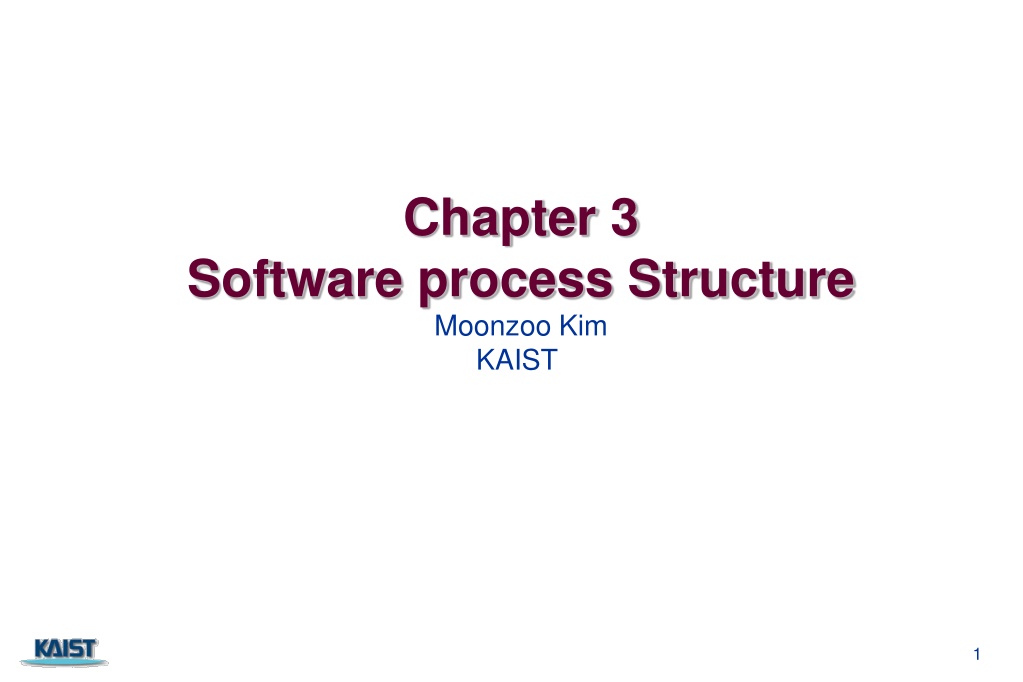
Understanding CMMI for Software Process Improvement
Dive into the world of Capability Maturity Model Integrated (CMMI) to enhance your software process capabilities. Explore the levels, goals, and practices defined by CMMI for optimized performance and improvement.
Download Presentation

Please find below an Image/Link to download the presentation.
The content on the website is provided AS IS for your information and personal use only. It may not be sold, licensed, or shared on other websites without obtaining consent from the author. If you encounter any issues during the download, it is possible that the publisher has removed the file from their server.
You are allowed to download the files provided on this website for personal or commercial use, subject to the condition that they are used lawfully. All files are the property of their respective owners.
The content on the website is provided AS IS for your information and personal use only. It may not be sold, licensed, or shared on other websites without obtaining consent from the author.
E N D
Presentation Transcript
Chapter 3 Software process Structure Moonzoo Kim KAIST 1
The CMMI (Ch. 37) (1/3) CMMI stands for Capability Maturity Model Integrated Remember that the process repeatability and predictability are called capability maturity By the mid-1990 s, the five-level world view of Capability Maturity Model for Software became dominant and there appeared too many CMMs for [*] Therefore, U.S. Defense Department and Software Engineering Institute @ CMU developed a common and extensible framework, which is CMMI, a second generation of CMMs Excerpted from CMMI Survival Guide by S.Garcia and R.Turner 2
The CMMI (2/3) Process improvement is to incorporate individual wisdom/guidance into the way the organization works Individual learning: Knowledge resides within individuals and may be informally shared Group learning: Knowledge is explicitly collected and shared within groups such as teams or projects, supporting better performance within the group Organizational learning: Group-based knowledge is collected and standardized, and mechanisms exist that encourage its use across related groups Quantitative learning: The organizational knowledge tranfer and use are measured, and decisions are made based on empirical information Strategic learning: Knowledge collection, transfer, and use are rapid across the organization 1. 2. 3. 4. 5. 3
The CMMI (3/3) The CMMI defines each process area in terms of specific goals and the specific practices required to achieve these goals. Level 0: Incomplete Level 1: Performed Level 2: Managed Level 3: Defined Level 4: Quantitatively managed Level 5: Optimized Specific goals establish the characteristics that must exist if the activities implied by a process area are to be effective. Specific practices refine a goal into a set of process-related activities. 4
Process Assessment The process should be assessed to ensure that it meets a set of basic process criteria that have been shown to be essential for a successful software engineering. Many different assessment options are available: SCAMPI (Standard CMMI Assessment Method for Process Improvement) CBA IPI (CMM-Based Appraisal for Internal Process Improvement) SPICE (ISO/IEC15504) ISO 9001:2000 5
Assessment and Improvement Software Process is examined by identifies modifications to identifies capabilities and risk of Software Process Assessment Capability Determination leads to leads to Software Process Improvement motivates 6
Personal Software Process (PSP) Recommends five framework activities: Planning High-level design High-level design review Development Postmortem stresses the need for each software engineer to identify errors early and as important, to understand the types of errors 7
Team Software Process (TSP) Each project is launched using a script that defines the tasks to be accomplished Teams are self-directed Measurement is encouraged Measures are analyzed with the intent of improving the team process 8
Similar International Standards Evaluation Assurance Level (EAL) The Evaluation Assurance Level (EAL1 through EAL7) of an IT product or system is a numerical grade assigned following the completion of a Common Criteria (CC) security evaluation The intent of the higher levels is to provide higher confidence that the system's principal security features are reliably implemented. The EAL level does not measure the security of the system itself, it simply states at what level the system was tested to see if it meets all the requirements of its protection profile To achieve a particular EAL, the computer system must meet specific assurance requirements, involving design documentation, design analysis, functional testing, or penetration testing. 9 Quoted from Wikepedia
EAL 7 Levels 7 Levels EAL1: Functionally Tested EAL2: Structurally Tested EAL3: Methodically Tested and Checked EAL4: Methodically Designed, Tested, and Reviewed Commercial operating systems that provide conventional, user- based security features are typically evaluated at EAL4 AIX, HP-UX, FreeBSD, Solaris, Novell NetWare, SUSE Linux Enterprise Server 9, SUSE Linux Enterprise Server 10, Windows 2000 Service Pack 3, and Red Hat Enterprise Linux 5 10
EAL 7 Levels (cont.) 7 Levels EAL5: Semiformally Designed and Tested Numerous smart card devices have been evaluated at EAL5 XTS-400 (STOP 6) is a general-purpose operating system at EAL5 augmented. LPAR on IBM System z is EAL5 Certified. EAL6: Semiformally Verified Design and Tested Ex> Green Hills Software INTEGRITY-178B OS EAL7: Formally Verified Design and Tested Ex> Tenix Interactive Link Data Diode Device 11
CC Evaluation Costs File:Common Criteria evaluation costs.gif 12




